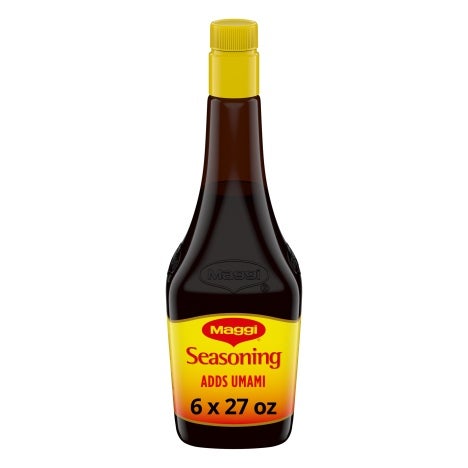
Menu More Plants: Asian Inspirations
Plant-forward cooking is super popular, and Asian cuisine is the easy way to rock the trend. Learn which Asian styles will please your guests and work for you.
Some of the world’s best-known cuisines celebrate plant-based ingredients: fruits and vegetables, grains, seeds, nuts, beans, and lentils. If it’s used at all, meat is more of a garnish than a centerpiece.
Asian is one of these. Think of stir-fries of colorful fresh vegetables, or tofu with a spicy mapo sauce. Vietnamese noodle soups with their garnishes of verdant herbs. Vegetarian Indian curries, Japanese edamame soybeans in the shell, Korean rice bowls such as bibimbap. Iconic specialties like these are perfect for adding more plant-based recipes to menus.
For more on Asian-inspired plant-based menu items, see below.
Stir-Fries—Whether they contain some meat or not, stir-frying is the perfect vehicle for getting more vegetables on the menu. Wok-tossing veggies like broccoli, string beans, or asparagus greens with a flavorful sauce and perhaps some peanuts or sesame seeds brings excitement and added value to familiar standards, pointing them in a signature direction.
- Offering a medley of stir-fried Asian vegetables such as baby corn, shiitake mushrooms, and snow peas is another possibility for a plant-based item that can also serve as a vehicle for shrimp or diced chicken
- The Asian method of wok-tossing leafy greens like spinach, pea tendrils, and watercress with garlic and broth makes for a healthy and distinctive side dish
- Display stir-fry stations where guests can select their choice of vegetables, proteins, sauces, and grains allows for customization and encourages repeat business—try one combination of ingredients today, and a different one tomorrow
Rice Bowls—This on-trend menu platform also has ancient roots in Asian cuisine. Koreans, especially, enjoy bap—cooked rice or another grain, such as millet, brown or black rice, or even beans, topped with vegetables, seafood, tofu, or bits of meat.
- Bibimbap is probably the most well-known Korean rice bowl, traditionally topped with seasoned spinach, mushrooms, sautéed carrots or zucchini, sprouts, and other vegetables, along with a raw or fried egg, with or without sliced beef. The rice is mixed together with hot bean paste, soy sauce, or gochujang (chili paste) by the customer, just before eating
- Bap can be served in a hot stone bowl (dolsot) or steel pan, which serves to crisp the rice on the bottom, creating a crunchy layer that is much prized
- Riffs on Asian rice bowls are easy to do: start with an interesting rice (fried rice, jasmine rice, short-grain sushi rice, or sticky rice), then top with something like stir-fried cabbage, spicy smashed cucumbers, miso-glazed squash, lemongrass tofu or another protein, a soft-cooked or fried egg, etc
Noodles and Noodle Soups—Noodles of all kinds are the perfect vehicle for Asian-style plant-based menu specialties.
- Vietnamese pho is one of the benchmarks for the category, a bowl of rich hot broth garnished with small bits of meat or chicken and lots of vegetables, including charred onions or scallions, sprouts, leafy greens, and an accompaniment of fresh basil, cilantro, chiles, and lime wedges
- Ramen is the other big Asian noodle inspiration; while this comforting, brothy soup often contains pork or a pork-based broth, there are lots of ways to make a savory vegetable-based ramen using mushrooms, scallions, spinach, tofu, and seasoning, with or without a hard- or soft-boiled egg
- Lo mein is a popular dish of wheat flour noodles stir-fried with vegetables, with or without small portions of meat or seafood. Experiment with different types of noodles, not just wheat-based but rice noodles, Japanese soba buckwheat noodles, cellophane bean thread noodles
The information provided is based on a general industry overview, and is not specific to your business operation. Each business is unique and decisions related to your business should be made after consultation with appropriate experts.
- Minor’s® and Maggi® offer a number of ready-to-use Asian sauces and other products that put on-trend specialties within easy reach, with the ability to create marinades, dipping sauces, stir-fry seasoning sauces, and other flavor builders
- Nestlé Action Stations provide plug-and-play customizable menu concepts including international soups and noodles, street food, wellness, and a new snacking platform
- Dumplings, egg rolls, and spring rolls (fresh ingredients wrapped in rice paper) are great vehicles for vegetables, and can be ramped up with an Asian dipping sauce or garnished with seaweed salad
- Many Indian specialties are vegetarian, including flavorful curries
- Not all sushi contains raw fish. Vegetable varieties—particularly rolls—can be made with avocado, cucumber, string beans, asparagus or julienned carrots, and more







